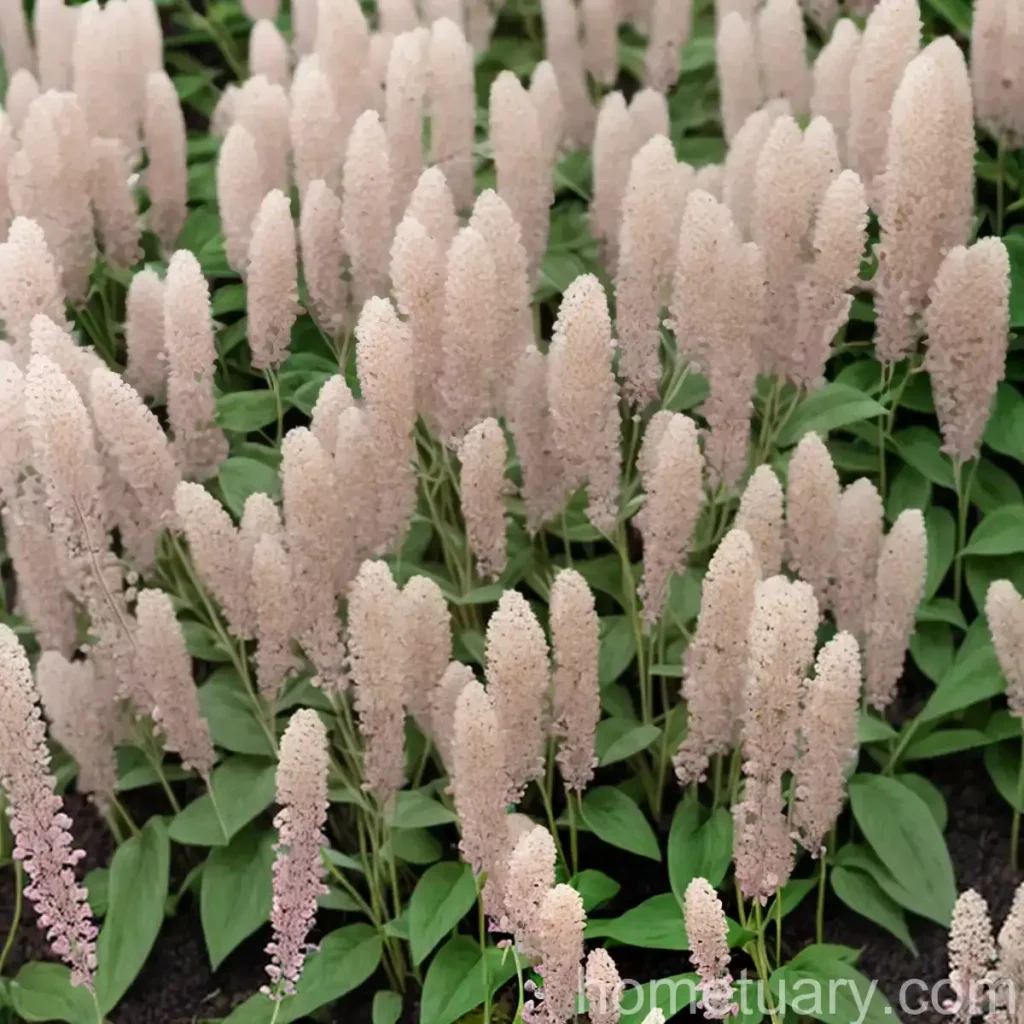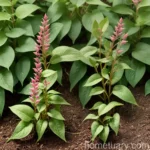Plant Scientist’s Guide: mountain fleece (Persicaria amplexicaulis ‘Golden Arrow’)
What is mountain fleece (Persicaria amplexicaulis ‘Golden Arrow’)?
Mountain fleece, scientifically known as Persicaria amplexicaulis ‘Golden Arrow’, is a vibrant perennial plant that is prized for its striking foliage and long-lasting blooms. It is a cultivar of Persicaria amplexicaulis, commonly known as mountain fleece or red bistort. This variety is cherished for its golden-yellow leaves and the long-lasting spikes of vibrant pink flowers that emerge in the late summer and last through the fall.
The name “mountain fleece” alludes to the soft, fleece-like appearance of the flowers, resembling the fleece of sheep found in mountainous regions. The ‘Golden Arrow’ variety specifically refers to the unique golden color of its foliage, making it an exceptional addition to gardens and landscapes.
Key Takeaways – mountain fleece (Persicaria amplexicaulis ‘Golden Arrow’)
Before delving deeper into the care and cultivation of mountain fleece, it’s beneficial to understand the essential takeaways regarding this remarkable plant:
- Scientific Name: Persicaria amplexicaulis ‘Golden Arrow’
- Common Names: Mountain fleece, Golden Arrow fleece plant
- Plant Type: Perennial
- Notable Features: Golden-yellow foliage, vibrant pink flowers, long blooming period
- Ideal Growing Conditions: Full or partial sunlight, moist and well-drained soil
- Maintenance: Moderate, benefits from regular watering and occasional fertilization
- Usage: Ornamental gardens, borders, and containers
- Distinctive Characteristics: Attracts wildlife, provides seasonal interest, and tolerates deer
- Propagation: Can be propagated through division or cuttings
Now, let’s delve into the finer details of cultivating and caring for mountain fleece, from its preferred growing conditions to maintenance and potential pest and disease issues.
Culture
Uses
The mountain fleece plant, with its bright and striking appearance, serves various purposes in gardens and landscapes. Some primary uses include:
- Ornamental Features: The vibrant foliage and long-lasting pink spikes of flowers make mountain fleece an excellent choice for adding visual interest to garden beds and borders.
- Wildlife Attraction: The flowers of mountain fleece are known to attract pollinators such as bees and butterflies, enhancing the biodiversity of the garden.
- Container Planting: Due to its striking appearance and moderate size, mountain fleece is well-suited for container gardening, adding vibrant color to patios and balconies.
Water
Sunlight
Fertilizer
Soil
Pruning
Propagation
Container Popularity
Common Diseases
Disease diagnosis
Common pests
Botanist’s tips
Fun facts
- The golden color of the ‘Golden Arrow’ fleece plant is particularly striking when the sunlight illuminates the garden, creating a captivating display.
- The mountain fleece plant has historical uses in traditional medicine and folklore, with its leaves and roots having reputed medicinal properties.
Links to External Resources
For additional information and resources on mountain fleece (Persicaria amplexicaulis ‘Golden Arrow’), consider exploring the following links:
- Royal Horticultural Society – Persicaria amplexicaulis ‘Golden Arrow’
- Missouri Botanical Garden – Persicaria amplexicaulis
In conclusion, mountain fleece (Persicaria amplexicaulis ‘Golden Arrow’) is a delightful and visually captivating plant that adds vibrancy to garden spaces. By understanding its preferred growing conditions, maintenance needs, and potential uses, both novice and experienced gardeners can cultivate and appreciate the beauty of this distinctive perennial. Whether it’s planted in garden beds, borders, or containers, the ‘Golden Arrow’ fleece plant is sure to make a lasting impression with its golden foliage and captivating pink flowers.
Remember to stay tuned for new insights and discoveries from the world of plant science!
Disclaimer: The information provided in this blog post is for educational and informational purposes only. It does not constitute professional advice. Before implementing any plant cultivation practices, it is advisable to consult local gardening experts and consider specific environmental conditions.















